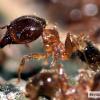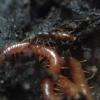Do you have pavement ants in your area? Can you confidently identify them, or are you willing to try? If so, you could be instrumental in helping advance a cool research project investigating this important invasive species (and you may be able to earn a few bucks in the process!).
I am looking for fixed samples of the pavement ant, Tetramorium caesptium, from a broad geographic range across North America. Ideally, I would like approximately 30 individual workers per colony from three colonies in the same general area (e.g. within a 5-20 mile radius). The ants can be stored in fixative (e.g. alcohol), or they can simply be frozen and sent via express mail. All ants from the same colony can be kept in the same collection tube. If you know where to find colonies in your area, I don't expect collection should take very long at all (after the ants become active in the spring, of course - for those of you in colder climates).
I will pay for all necessary supplies and shipping, and I'll provide a more detailed set of instructions to anyone interested. If you're interested but are uncertain of your ID skills, I'm also willing to help with that (for instance, we could exchange photos of candidates until we have a positive ID). This collection will be used for a student research project, so funds are limited (there's not a ton of money out there for ant research!), but if it would provide some incentive, I can probably also offer some reasonable fee for your time. Regardless of a fee, I'm happy to acknowledge collectors in any publications or presentations that may come from this work.
If you're interested, please respond with your location, your familiarity with the species, and any other information that may be relevant for coordinating collection. Or if you know of someone else who may be interested and able to help, please pass this post along to them.
Thanks!






















